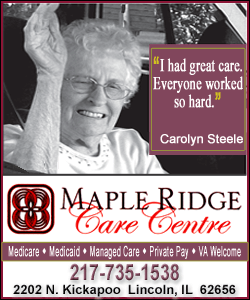 "Wear and tear" disease or osteoarthritis of the knee, also known as
OA, is the most common form of arthritis and can be life-changing.
The associated pain and stiffness decreases an individual's ability
to carry out routine day-to-day activities, such as climbing stairs
or standing for a long period of time. It is estimated that women
older than 50 years of age are more likely to develop osteoarthritis
of the knee than men.i "Wear and tear" disease or osteoarthritis of the knee, also known as
OA, is the most common form of arthritis and can be life-changing.
The associated pain and stiffness decreases an individual's ability
to carry out routine day-to-day activities, such as climbing stairs
or standing for a long period of time. It is estimated that women
older than 50 years of age are more likely to develop osteoarthritis
of the knee than men.i
In the questions and answers below, Jeffrey E. Rosen, M.D., a
leading osteoarthritis expert and chairman of the Department of
Orthopaedics & Rehabilitation at New York Hospital Queens, shares
expert insights and advice that people who suffer from
osteoarthritis of the knee should know, including ways to maintain a
healthy, active lifestyle, and he identifies common misconceptions
about the disease.
What is osteoarthritis?
Often referred to as "wear and tear," osteoarthritis is a chronic
disease in which the cartilage, or cushioning tissue between the
surfaces of joints, wears away. When cartilage surrounding the joint
breaks down, the joint has to bear more weight. This transmits
across the joint, possibly leading to changes in the underlying
bone.

What are some common misconceptions about osteoarthritis of the
knee?
Osteoarthritis is often confused with osteoporosis, which is a
disease that affects the makeup of the bone, as opposed to the
joints and cartilage surrounding the bone. Another common
misconception is that osteoarthritis of the knee only affects older
people.
Who is at risk of developing osteoarthritis?
There are certain factors that can increase a person's risk,
including weight, age, gender, and injury or trauma to the knee
joint. Those who have had repeated trauma to the knee joints, also
referred to as "micro-traumas," are at higher risk, and women are
affected more than men. Approximately 60 percent of the nearly 27
million people affected by osteoarthritis of the knee are women.ii
What are the symptoms? How can you tell it may be time to see
your doctor?
General symptoms of osteoarthritis of the knee are stiffness,
particularly when getting up in the morning, aching in the joints,
and pain while walking up and down stairs. Patients will normally
use over-the-counter medications to treat the symptoms. However, if
symptoms progress over time or you start to feel a "crunching"
sensation from inside the joint, this may be a sign that it is time
to schedule an appointment with your doctor.
Also, consult your doctor when pain, stiffness or swelling becomes
too persistent or starts to affect your stability when standing.
Another sure sign to seek medical attention is when symptoms cannot
be alleviated with an anti-inflammatory or an over-the-counter
medication, such as acetaminophen. The key to a better outcome is
seeking support early and before the problem progresses too far.
How is osteoarthritis knee pain treated?
Traditionally, physicians have approached treating osteoarthritis in
a stepwise fashion, beginning with improving diet as well as using a
modified exercise program, then moving toward pharmacological
intervention as needed. However, now physicians are starting to try
different treatment approaches to help get the best result possible
for patients as quickly as possible. Rosen’s preference is to use
multimodal strategies where he can combine treatments and therapy
strategies.

Non-interventional treatment
-
Modified shoe wear,
orthotics
-
Assisting device,
such as a cane
-
Weight loss
-
Nutrition and proper
diet
Over-the-counter medication
Interventional treatment
[to top of second column] |

What type of questions should people who suffer from
osteoarthritis knee pain ask their doctors when it comes to diet,
nutrition, exercise and treatment options?
Rosen tells his patients about the importance of being informed. He
recommends asking your doctor about ways to maintain proper body
weight and an exercise program that is appropriate for you. It is
also important to keep an open dialogue with your doctor about
worsening symptoms so treatment can be adjusted as necessary.
What are three things recommended for someone diagnosed with
osteoarthritis knee pain to keep in mind?
Rosen recommends:
-
Maintain a healthy body weight.
It is essential to maintain a
healthy body weight. In fact, every 10 pounds, either lost or
gained, is magnified by four times, depending on the physical
activity being done by the individual.
-
Stay active and exercise.
Keep up an active lifestyle, and
make sure this includes a stretching and exercise program. A common
misstep is to focus on cardiovascular training only or weight
training only, whereas a combination of the two is ideal. Stronger
muscles can act like shock absorbers to joints, so a strength
training program is beneficial.
-
Educate yourself about your disease.
Finally, it is
imperative to be educated about your condition and aware of the
contributing factors so you know when it is the right time to see
your doctor.
___

iAmerican Academy of Orthopaedic Surgeons. (2007).
"Frequently Asked Questions about Osteoarthritis of the Knee."
Retrieved Mar. 8, 2011, from
http://orthoinfo.aaos.org/topic.cfm?topic=a00228.
iiArthritis Foundation. (2011). "Arthritis in Women."
Retrieved Mar. 8, 2011, from
http://www.arthritis.org/women.php.
___
[Text from article from
ARAcontent]Jeffrey E. Rosen, M.D. has authored more than 35 publications and
over 40 presentations in the orthopedic subject area and is
currently a speaker and paid consultant for Ferring Pharmaceuticals
Inc.
For more information, visit
www.euflexxa.com.
EUFLEXXA® (1 percent sodium hyaluronate) is used to relieve knee
pain due to osteoarthritis. It is used for patients who do not get
enough relief from simple pain medications such as acetaminophen or
from exercise and physical therapy.
EUFLEXXA is only for injection into the knee, performed by a
doctor or other qualified healthcare professional.
Important safety information
You should not take this product if you have had any previous
allergic reaction to EUFLEXXA or hyaluronan products. You should not
have an injection into the knee if you have a knee joint infection
or skin diseases or infections around the injection site.
The safety and effectiveness of EUFLEXXA has not been established in
pregnant women, women who are nursing or children less than 18 years
of age. After you receive this injection, you may need to avoid
activities for 48 hours such as jogging, tennis, heavy lifting or
standing on your feet for a long time (more than one hour at a
time).
The most common adverse events related to EUFLEXXA injections were
joint pain, back pain, limb pain, muscle pain and joint swelling.
See full prescribing information.
EUFLEXXA® is a registered trademark of Ferring B.V.
 |